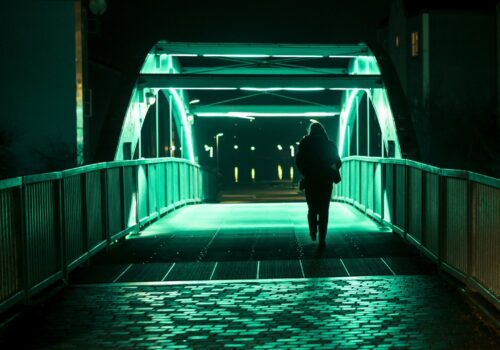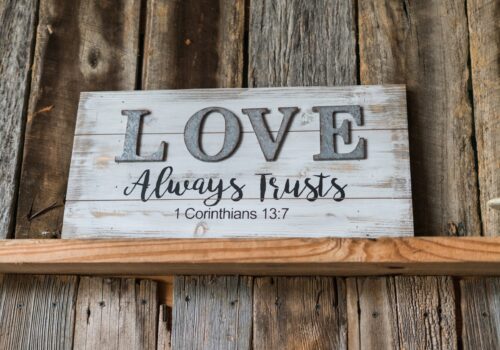Download PDF: Exploring Conflict and Peacebuilding
Exploring World Religions through the Lens of Sacred Space
“Sacred Space in World Religions” is a course taught at Candler School of Theology as a summer intensive. In it, we take advantage of the intensive summer school schedule, as well as the rich resources of the city of Atlanta, to explore religious architecture in four major world religions: Hinduism, Judaism, Christianity, and Islam. Using worship spaces as the focal point not only allows us to make use of a common touchstone for comparing and contrasting different religious traditions and practices, but also sharpens our awareness of the impact of space on our own religious practices.
The course is designed specifically for Christians in a graduate theological program, the majority of whom are in preparation for church ministry. The intent, therefore, is to prepare church leaders for the contemporary United States context, a milieu both increasingly pluralistic and technologically fluid. Christian ministry best suited for this context is ministry that can find common touchstones for inter-faith dialogue and cross-community collaboration while remaining deeply and reflectively rooted in a particular tradition and identity. Christian ministry that can embody its faith commitments in the way it exercises stewardship of its resources, including buildings and grounds, is ministry able to flourish in this context.
The following learning goals shape the course design:
- to develop a basic vocabulary and familiarity with architectural concepts as they relate to the design of worship spaces
- to develop skills in analyzing the role space and design play in the life of religious communities
- to gain a greater understanding of the distinctions between different branches of the Christian faith, using sacred space as the primary lens
- to expand one’s pastoral and theological skills for leadership in the Church by including an awareness of the significance of design and space in religious life
- to gain a basic understanding of the religious practices and beliefs of several major religious traditions outside the Christian faith (viz. Judaism, Islam, Hinduism) for the purposes of increasing one’s ability to engage in inter-faith dialogue, community partnerships, and peacebuilding in a religiously plural context
- to gain an appreciation for the role sacred space can play in both exacerbating and transforming conflict
These latter two goals, and the specific classroom activities created to advance these goals, are the subject of this reflection.
Who We Are
In this team-taught course, each instructor plays a distinct role. Hazem Ziada, Ph.D., is Senior Lecturer and BA (Honors) Course Director at the Birmingham School of Architecture in Birmingham, England. Elizabeth W. Corrie, Ph.D., is Assistant Professor in the Practice of Youth Education and Peacebuilding at Candler School of Theology. While Dr. Ziada introduces concepts of space and architecture, Dr. Corrie introduces concepts of sacrality and ritual, and together the instructors encourage students to develop a practical theology that attends to the role of space and ritual in worshipping communities. Instructors also draw on their own religious traditions—Muslim and Christian—as resources for modeling inter-faith dialogue in the classroom.
Religion, Conflict, and Peacebuilding through the Lens of Sacred Space
While the entire course seeks to develop skills in engaging religious pluralism with an eye towards peacemaking, the final unit and integrative project of the course deal directly with sacred space as both a site of conflict and a resource for peacemaking between and within religious communities.
The final unit falls on the last two days of the ten-day course. The first day introduces the problem of sharing sacred space. Students begin by reading the article, “’To Halve and to Hold’: Conflicts over Sacred Space and the Problem of Indivisibility,” by political scientist Ron E. Hassner. In this piece, Hassner develops a typology for explaining why religious communities consider their sacred sites “indivisible”—a view which impedes sharing, dividing, or finding other sites as substitutes—and what contingent factors determine whether this indivisibility will lead to conflict.1 The degree to which a site is central to a faith tradition, accessible exclusively to that tradition’s community, irreplaceable by other sites, and marked out by clear and rigid boundaries determines the degree to which the sacred space is “indivisible” and non-negotiable. When contingent factors related to territorial conquest, sectarian rivalry, or economic competition for land come into play, the indivisibility of sacred space leads to conflict. Hassner analyzes the nature of conflict over sacred space in order to suggest an alternative policy for approaching conflict resolution. Rather than following a “Hobbesian” view that ignores the symbolic dimension of these disputes and treats them merely as territorial negotiations, or a “Huntingtonian” view that sees the disputes as rooted in intractable religious forces beyond the influence of political actors, Hassner recommends taking the symbolic import of sacred space seriously while lifting up the socially constructed dimension of sacrality as a more “flexible” framework for viewing sacred space in conflict mediation. He emphasizes the role religious leaders can play in helping their communities “reframe” the way they view their sacred sites so as to make negotiation a viable, faithful option.
Hassner’s article provides students with analytical leverage to develop their understanding of the role sacred space plays in disputes. In addition to reading this piece, students divide into groups to examine one of two case studies and apply Hassner’s typology to assess the nature of the disputes and possibilities for their resolution. The two cases involve the Temple Mount/Haram al-Sharif site in Jerusalem and the Babri Mosque site in Ayodhya, India. During their small group discussions, students apply Hassner’s theory by assessing the degree of “indivisibility” involved in their particular case, using a worksheet that walks them through the various aspects of sacred space Hassner discusses. By employing Hassner’s theory, students gain a deeper understanding of what is at stake in conflicts over sacred space while developing some tools for helping communities find ways to share sacred space that continue to honor and draw on their traditions’ beliefs and ritual practices.
On the second day, these skills are put to the test in the final integrative activity of the course. Students are assigned particular “roles” as representatives of different religious communities currently active on our university campus, including Orthodox Jewish, Orthodox Christian, Reform Jewish, Evangelical Protestant, Roman Catholic, Hindu, and Muslim, and must work together to design a multi-faith religious life center for the Emory University campus. We assign two students to each “role,” so that we can divide the group into two different “design groups” that will each develop an original proposal for a Religious Life Center to present in a “design competition” to the Dean of Religious Life, the Reverend Susan Henry-Crowe. Since her Office of Religious Life has actual long-term plans for building such a multi-faith center, the presence of Reverend Henry-Crowe as the “judge” of our design competition adds to the practical relevance of the exercise. She acts as an outside voice to provide feedback to the students on the extent to which they have attended to the multiple aspects involved in creating workable, sharable sacred space for a pluralistic context.
Before this class session, students prepare by reviewing the attitudes towards sacred space typical of the community they will be “representing,” as well as that tradition’s practical space and design needs. They draw on all the readings they have been doing throughout the class on their topic, as well as their field notes from the site visits to these religious communities and information on the Emory University website that these groups publicize about their commitments and mission. During the first part of the class, the pairs assigned to the same tradition meet to discuss their notes and prepare for the negotiation process. We instruct them to develop lists of what their religious tradition requires for a space to be usable–the “non-negotiables”–as well as a list of aspects of design that would be good to have, but could be adjusted as they enter into negotiations with others. Students are encouraged to embrace fully their “role” and stay “in character” throughout the session. In the two iterations of this assignment, we have not met with any significant challenges in encouraging students to do this. Although one might expect some students to have reservations about playing a role that is far outside their experience, we have observed better results in these cases than in the cases of students playing roles that are “close to home.” Emphasizing that the assignment offers an opportunity to “show what you know” in a non-traditional manner has made the exercise appealing to nearly all students in our experience.

During the second part of the class, the student pairs split off to represent their community in one of the two different multi-faith groups, each meeting in a different room and supervised by an instructor. The students gather around a table, with different colored pencils and long rolls of butcher-block paper, and sketch out basic architectural plans for a Religious Life Center to which everyone at the negotiating table can agree. The activity pushes students to consider how “indivisible” sacred space has to be and what possibilities exist for inter-faith cooperation in sharing space, while challenging them to apply what they have been learning throughout the course about the various religious traditions and the theological import of space. In other words, through this exercise students use concepts of sacred space as a lens through which to learn the dynamics of conflict and peacemaking in a pluralistic context.
Reflection
We have used this final unit in two iterations of the “Sacred Space in World Religions Course” and have found it to be effective in meeting the goals we established in the original course design, as well as in allowing students to engage in practices of theological reflection and conflict negotiation through application of course material to “real-life” cases of religious conflict and peacebuilding.
Through these exercises, we observed several positive learning outcomes. First, students gained an appreciation for the role sacred space can play in both exacerbating and transforming conflict. Through the examination of the case studies of Jerusalem and Ayodyha, with Hassner’s rubric as a lens, students came to see how particular spaces become sites of deadly conflict and considered the ways in which religious leaders (or politicians appealing to religious sensibilities) can increase the “sacred worth” of particular spaces, making compromise or collaboration seemingly impossible. During the Religious Life Center activity, they saw how this plays out even in the United States context, as they were able to see how the needs of different religious communities on a typical college campus make sharing space challenging even when all parties value peaceful coexistence and celebrate pluralism.2 Through the process of designing their spaces, students quickly ran into problems of scheduling—when different groups could use worship spaces and how these decisions would be adjudicated. They also found it difficult to create a common worship space hospitable both to traditions that restrict the use of figurative images in worship, such as Protestant Christianity, Islam, and Judaism, and to traditions that incorporate images and icons in their rituals, such as Hinduism, Roman Catholicism, and Orthodox Christianity. Students generally hoped to encourage table fellowship inclusive of all traditions as a form of peacebuilding, but discovered the expense and challenge of designing cooking and eating spaces that would meet the diverse dietary requirements of the different traditions.


At the same time, however, students were able to go beyond the “Huntingtonian” view of religious conflict as a “clash of civilizations” and see where negotiation and peacemaking could take place. Hassner argues for the importance of religious leadership in transforming how people of faith view sacred space, and suggests that a deep appreciation for the religious significance of space need not lead to the conclusion that positions are static or monolithic. As students investigated the details of their case studies of Jerusalem and Ayodhya, they discovered how much of these seemingly intractable conflicts could be transformed through creative understandings and uses of space. In the Religious Life Center activity, some students discovered highly creative ways to work around their challenges. For example, one group solved the dilemma of how to include/exclude images in the worship space by creating a separate, recessed, domed alcove with icons for the Orthodox Christians that could be closed off with a curtain during worship times in which images would need to be absent from the worship space. Other students designed a series of kitchens that opened onto a common eating area on one side but connected to the worship space on the other side, making it possible for Hindus to prepare offerings for murti, for Jews to maintain kosher cooking spaces, and for other groups to keep their food separate from each other while maintaining an accessible eating space for common meals.
Second, students were able to demonstrate a basic understanding of the religious practices and beliefs of several major religious traditions outside their own Christian traditions, as well as appreciate the diversity within the broad spectrum of their own faith. Throughout the course, students visited worship sites of various religious communities within Atlanta and spoke with practitioners on site, in addition to reading texts that gave them an overview of the basic tenets and practices of each tradition. Rather than conducting a final written exam to assess how well they understood the basics of these traditions, we had students participate in the Religious Life Center exercise, which required each of them to know enough about the specific tradition he or she represented in the role-play in order to advocate for the needs of that community. It was obvious when students had not prepared their roles fully or did not yet grasp the issues at stake, and students who had fully engaged in the course throughout had opportunities to apply this knowledge in the way they mediated conversations between the other students. For example, a student playing the role of an Orthodox Christian insisted on the need for a domed area with icons but asked the Muslim and Jewish members how they could work around their need for a space free of figurative images, indicating his awareness of this difference across these traditions.

Third, the Religious Life Center activity created a place to practice inter-faith dialogue with a specific common purpose, which encouraged them to find ways to develop partnerships and build peace through the medium of shared space. In both iterations of this activity, we were surprised at how fully students entered into their roles and advocated both for the distinct needs of their communities and for an actively embodied (and spatialized) pluralism. One group included a plaza outside the front of the center with a reflecting pool whose stream led into a foyer with a “healing hall” dedicated to the acknowledgement of the devastation of inter-religious violence and prayers for peace. This group’s design also included office and worship space for an “as-yet-undesignated-faith-tradition,” in recognition that not all religious traditions had been included at the negotiation table and that Emory University’s growing diversity on campus would necessitate future space for other traditions.
Fourth, the presence of Dean Susan Henry-Crowe at the presentation session at the end of the activity underscored the relevance of their work for a “real-life” design problem with significant implications for religious conflict and peacebuilding. After studying the long-standing and seemingly distant conflicts taking place in Jerusalem and Ayodhya, students were given agency in the Religious Life Center activity to work towards religious peacebuilding in their own location. Knowing that Reverend Henry-Crowe would review their designs raised the stakes for the students and encouraged them to do their best work. They received valuable feedback from her on the specific implications of their ideas in terms of costs, logistical issues of design, and aspects of religious practices they may not have considered. By sharing her experience as the head of campus ministry for a religiously diverse campus, she modeled one way the students, as future ministers, could become active, conscientious leaders in the diverse communities in which they will serve.
Although we were pleased with the results of this activity, there are several potential weaknesses to consider. First, the assignment places a great deal of responsibility on each individual student to prepare well for the role and to engage fully using that preparation. In the cases of students who are introverted or less assertive around the negotiating table, “showing what they know” may be more difficult. The possibility that a student may show up unprepared—or not show up at all—means that the “role” he or she plays will be underrepresented. Nevertheless, we feel that the discomfort the underprepared student experiences in the presence of better-prepared peers is an important lesson in accountability that the students enforce rather than the instructors. For the shy student, it is worth experiencing a low-risk challenge that will be typical of many future work environments. Because we employ small group work that requires students to teach each other material throughout the course, students know by this final assignment the level of responsibility that we require, and we have found that they generally rise to the challenge.
Second, while we are able to assess how well students learn the assignment through classroom observation and the design sketches and presentations, an opportunity for written reflection after the activity, or a time to debrief in an additional class session, would help them articulate what they learned more fully and extend it to other contexts. What did they realize they needed to learn more about once they engaged in the activity? What did they realize about the limits of shared sacred space that they did not see using Hassner’s article? How could this experience help them in a future work context, for example, where they might design a new sanctuary with a congregation with diverse needs and views of what is “sacred”? To date, we have required students to write a final paper for this course on themes that are separate from this exercise. However, students could extend what they have learned from the Religious Life Center design exercise by investigating these and other questions as part of their final paper instead. This approach would allow the instructors to use another means to evaluate student learning from this exercise, and would still serve as a summative assessment for the entire course.
Conclusion
The purpose of highlighting a particular pedagogical practice with other educators is to suggest ideas translatable to other classrooms. While there are unique aspects to our course—the backgrounds of the co-instructors that embody inter-faith and interdisciplinary instruction and the rich resources of Atlanta and Emory University for exploring religious diversity—the use of case studies and role-plays is easily adapted for other contexts. Jerusalem and Ayodhya are only two possible case studies; other sites of religious conflict, particularly those that might be well known to students, can be used with Hassner’s rubric. A design of a Religious Life Center could become a hypothetical goal for any college campus, or instructors could consider other multi-faith spaces, such as airport or hospital chapels or a community center for an entire town. The success we observed came from the fact that students were given specific problems with “real-life” implications to address, sufficient time for preparation and discussion, and the encouragement to use their imagination and creativity to develop ideas capable of transforming conflict into engaged pluralism.
Photograph by mouserz.
Notes
- Ron E. Hassner, ‘”To Halve and to Hold’: Conflicts over Sacred Space and the Problem of Indivisibility,”Security Studies 12, no. 4 (2003): 1 – 33.
- The term “pluralism” here is used in the way Diana Eck defines it, as “the engagement that creates a common society from all that plurality.”http://pluralism.org/pages/pluralism/essays/from_diversity_to_pluralism






